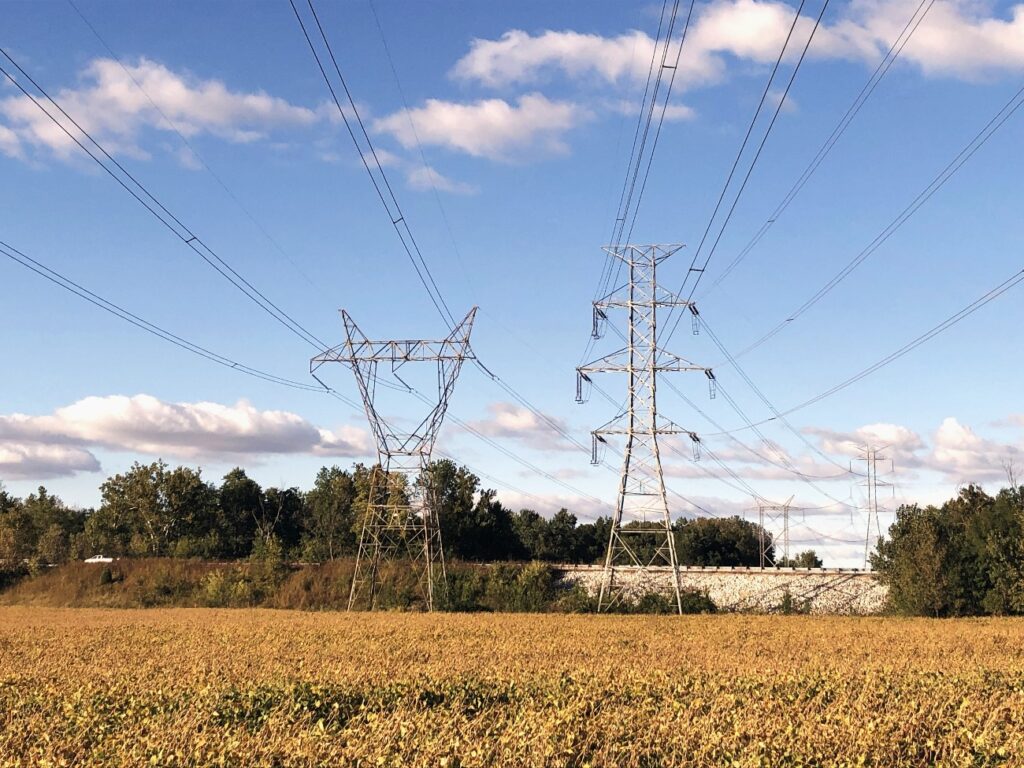
Demand for electricity in the Northwest is expected to grow at its fastest pace in decades.
(Robert Zullo/States Newsroom)
Customers of Oregon’s largest investor-owned electric utility pay more than 40% more for their electricity today than they did just four years ago. The massive increase in such a short period has garnered scrutiny from state leaders, and calls for greater transparency about what’s truly driving the increases.
Oregon’s U.S. Sen. Ron Wyden, a Democrat, issued a public letter Monday to Portland General Electric, or PGE, CEO Maria Pope requesting she provide documentation within 30 days of customer use and load growth, as well as details about how the company has spent historic federal subsidies meant to reduce ratepayer burden. In a press conference in Portland Monday focused on Medicare, Wyden said rising electricity prices is among the number one concerns he hears from Oregonians.
“A lot of them feel like they’ve just been hit by a wrecking ball,” Wyden told reporters. “The people I’m hearing from are balancing the food bill, against the rent bill, against the gas bill, and there’s another PGE rate hike, apparently, on offer right now, and folks are just telling me this is not sustainable.”
PGE, which serves 900,000 customers in Oregon, raised rates, on average, by 11% in 2022, 7% in 2023, and 18% in 2024. It is currently asking the Oregon Public Utilities Commission to raise rates, on average, by about 7.3% in 2025.
The commission will vote on whether to approve the rate hike by the end of the year.
Wyden also expressed anger at the high number of customers PGE has shutoff from electricity due to late or nonpayment. In April, three months after a cold snap in January, PGE shut off power to a record number of households – 4,700 in one month alone – due to nonpayment, according to the Citizens’ Utility Board, a watchdog group established by Oregon voters in 1984 to represent the interests of utility consumers.
Representatives from PGE did not respond to a request for comment by Monday afternoon. In petitioning the Public Utilities Commission to approve their most recent rate increase, PGE officials listed capital investments, rising insurance costs, a desire for higher profit margins and increased employee pay as reasons they needed to collect more revenue from customers.
The company’s stock (POR), is up nearly 16% over the last year, and Pope’s executive compensation has doubled in the last four years. She went from receiving more than $3.5 million in base salary and other compensation in 2020 to about $7 million in 2023, according to data from the Securities and Exchange Commission and The Oregonian / Oregon Live.
‘Blowing the whistle’
Wyden is requesting a number of details that would offer transparency about which users in the state are driving load growth, and whether they are paying for the costs of that growth or whether the company is shifting that to other small business and residential customers. He’s asked for a sector-based breakdown of all rate increases approved by the Public Utilities Commission in the last five years, and details about specific steps PGE is taking to limit cost increases across its customer base.
Bob Jenks, executive director of the Citizens’ Utility Board, said that it shows Wyden, like many in the state, are concerned that PGE is charging residential customers more so that it can afford to supply a growing number of data centers with power.
“One of the issues he’s getting at in those questions is the role of data centres and the industrial growth we’re seeing. We’re also concerned that may be where a lot of this rate increase is coming from,” Jenks said. Residential rates for PGE customers have gone up three times faster than rates paid by data centers, according to Jenks.
The largest growth in demand for electricity in the Northwest is from data centers owned by tech companies such as Google and Amazon. Demand is growing faster than the West can supply the energy, according to regional transmission authorities.
“If it wasn’t for data centers and industrial customers, PGE would have shrunk over the last 10 years,” Jenks said.
Wyden is also asking for a full accounting of the number of residential customers the company has disconnected from power over the last five years, details of the total amount of federal funds – including tax incentives such as the Inflation Reduction Act – the company has received over the last five years and how those funds are being spent, with specificity for how they’re being spent to reduce customer burden.
“My energy tax credits in the Inflation Reduction Act have supported PGE and utilities across the country by covering up to 30% of the cost of new clean energy installations. Can you please describe what factors are driving the increased costs you are experiencing that are not supported by those credits?” Wyden asked in the letter.
The state’s two other investor-owned utilities – Pacific Power and Idaho Power – have also increased rates significantly in recent years. Pacific Power is currently asking the Public Utilities Commission to allow it to increase rates nearly 18% in 2025, for a more than 40% increase in rates since 2020. Idaho Power, which serves about 20,000 customers, was approved by the commission in November to raise its rates rates about 12% on average in 2025.
Wyden said it was past time to “put the brakes on any further rate hikes.”
“What I wanted to do is blow the whistle on this,” he told reporters. “That is my objective with this letter, to put the brakes on any further rate hikes. After 41%, it’s time to take a timeout and give a break to the ratepayer.”
GET THE MORNING HEADLINES.

